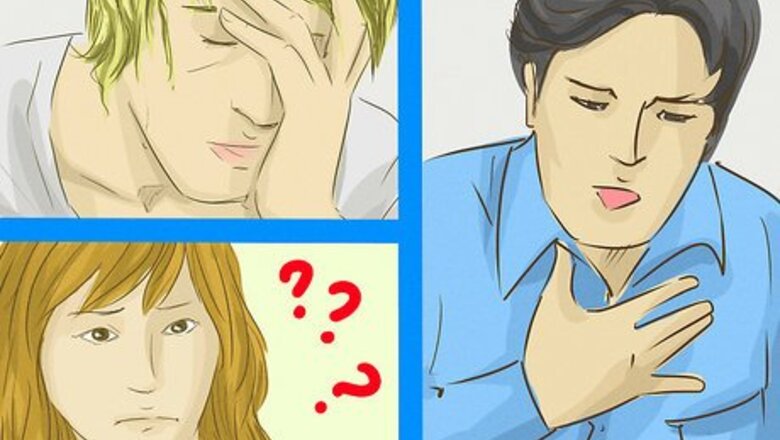
views
Understanding Hyperventilation

Discover the symptoms. It may be the case that even during an episode of hyperventilation a person may be unaware that they are over-breathing. Since most cases of hyperventilation are caused by fear, anxiety, or panic it may be difficult to notice specific symptoms. Pay careful attention to your symptoms during such states to see if they are indicative of hyperventilation. Fast or increased rate of breathing. Confusion, dizziness, and light-headedness may be present during hyperventilation. Weakness, numbness or tingling in the arms or mouth, and muscle spasms in the hands and feet can also occur with hyperventilation. Palpitations and chest pain may be noticeable during hyperventilation.
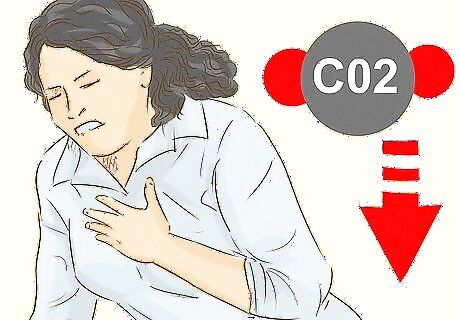
Understand the causes. The main causes of hyperventilation are states of panic or anxiety which increase the rate of breathing in a person. This over-breathing results in unusually low levels of carbon dioxide in the body. Altering these carbon dioxide levels cause the typical symptoms that come with hyperventilating. Hyperventilation can also be done at will, purposefully over-breathing. Some medical issues such as infection, blood loss, or heart and lung disorders can cause hyperventilation.

Visit with your doctor to learn more. To accurately and safely diagnose hyperventilation you will need to speak with your doctor to learn more. Your doctor will be able to help you discover the causes, triggers, and best treatment plans related to your own unique case. If your hyperventilation is caused by anxiety or panic attacks your doctor can help you with these issues directly. Hyperventilation may be indicative of another medical issue that your doctor can diagnose and work towards treating.
Using A Paper Bag
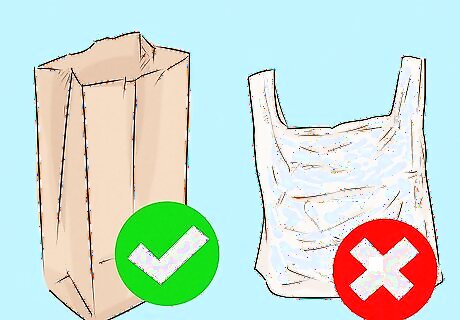
Find a paper bag to use. Breathing into a paper bag can be a useful method when managing the symptoms of a hyperventilation episode. By breathing into a paper bag you can help reuse carbon-dioxide that would normally be lost on your exhalation, maintaining proper levels in the body and avoiding the symptoms of hyperventilation. Do not use plastic bags as these can pose a choking hazard. Make sure the paper bag is clean and there are no small items inside that could be accidentally inhaled. Be sure that your doctor has cleared you for this technique as it can be dangerous to use when hyperventilation is caused by a physical injury or disease.
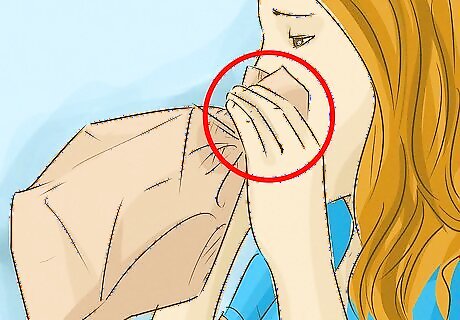
Place the paper bag over your mouth and nose. In order to properly use the paper bag breathing method during an episode of hyperventilation you will need to make sure that it completely covers your mouth and nose. This will ensure that the carbon-dioxide is caught in the paper bag, allowing you to re-breathe it and reduce some of the effects caused by hyperventilating. Hold the bag with one hand towards the opening of the bag. Pinching the bag slightly can help shape the opening of the bag, allowing it to fit over your mouth and nose more easily. Place the opening of the bag directly and completely over your mouth and nose.
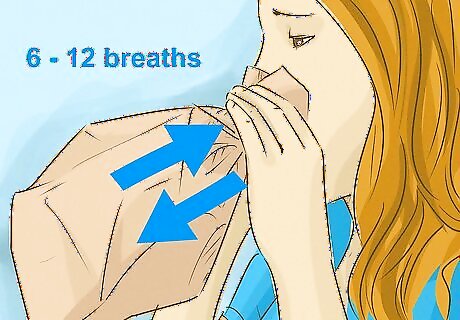
Breathe in and out of the bag. Once you have placed the paper bag over your mouth and nose you can begin breathing in and out of the bag. Try to remain calm and breathe as naturally and completely as you can during an episode of hyperventilation. Take no more than six to 12 breaths using the paper bag. Breathe as slowly and easily as you can. After taking six to 12 breaths remove the bag from your mouth and nose and breathe without it.
Retraining Your Breathing
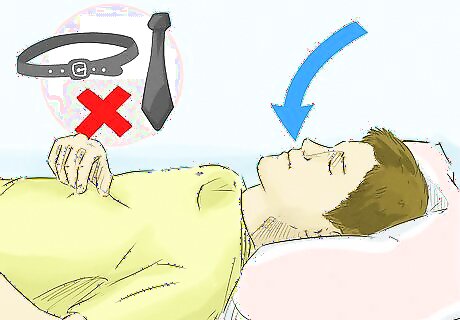
Lie on your back and relax. To start your practice of retraining your breathing you will need to rest comfortably on your back and relax your body. Relaxing the entire body will help you focus entirely on your breathing and let you get the most out of your breath training. Take off any tight or restrictive clothing such as a belt or tie. You can try putting pillows under your knees or back for extra comfort.

Put something over your stomach. Breathing during an episode of hyperventilation is generally shallow, at the chest level, and rapid. You will be working to retrain your breathing to have more rhythmic and complete inhalations using your stomach and diaphragm. By placing an object on your stomach you help keep the focus on this area and provide resistance to strengthen the muscles responsible for abdominal breathing. You can place something like a telephone book on your stomach while you retrain your breathing. Avoid any items that are too heavy or are an unusual shape. These can either cause injury or be difficult to balance on your stomach.
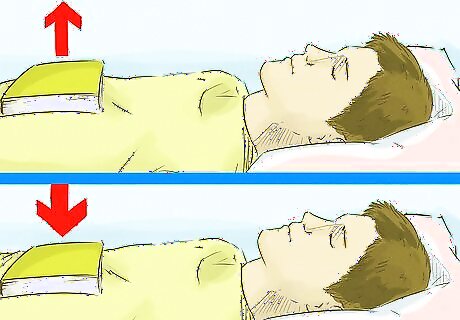
Breathe using your stomach. After you are comfortably laying down and have a suitable object placed on your stomach you can begin to retrain your breathing. The goal here is to raise and lower the item on your stomach, using your abdomen like a balloon. Keep the following in mind as you practice this new way of breathing: Breathe through your nose when practicing. If you can't breathe through your nose you can purse your lips and breathe through your mouth. Take comfortable and rhythmic breaths. Breathe smoothly and try to avoid pauses on the inhalation or exhalation. Only your abdomen should be moving. Keep the rest of your body relaxed.
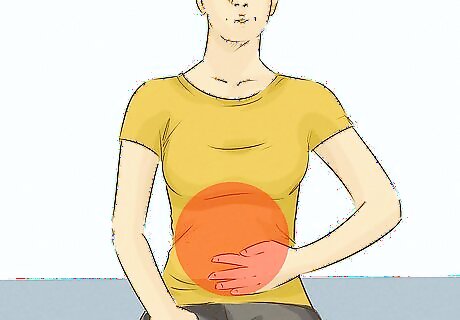
Keep practicing. In order to get the most out of this new method of breathing you will need to get regular practice. By practicing you will become more comfortable using this method of breathing, allowing you to avoid hyperventilating during a stressful time. Practice for at least five to 10 minutes a day. Gradually slow your rate of breathing during your practice sessions. Begin practicing this way of breathing while sitting up or walking. Eventually you will want to use this method right before you expect a panic attack or during one.
Getting Treatments For Panic Induced Hyperventilation
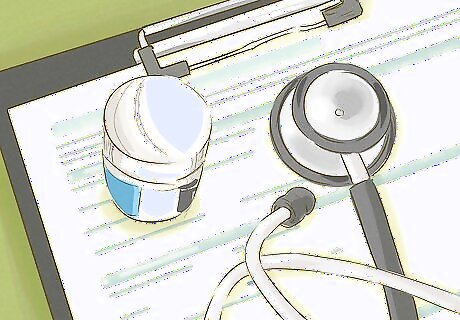
Consider medication. If your hyperventilation is caused by panic or anxiety related issues your doctor may prescribe medications to treat your anxiety. These medications work to reduce the effects of anxiety and panic attacks, in turn reducing the instances of hyperventilation. Talk with your doctor to learn more about the medications used to treat anxiety and panic attacks. SSRIs or selective serotonin reuptake inhibitors are commonly prescribed antidepressants. SNRIs or serotonin and norepinephrine reuptake inhibitors are FDA approved as a antidepressants. Be aware that medications can take weeks before effects are noticeable. Benzodiazepines are usually given only for short term use as they are habit forming over time.

Work with a psychotherapist. Hyperventilation related to panic and anxiety disorders can sometimes be treated by a psychotherapist. Your psychotherapist will work with you to uncover and cope with any underlying psychological issues that may be responsible for panic or anxiety-related issues and the hyperventilation they can cause. Most psychotherapists will use Cognitive Behavioral Therapy to help you move beyond the physical sensations caused by panic or anxiety. Psychotherapy sessions can take time before the effects are noticeable. Sticking with the process for several months will help ensure that your symptoms decrease or disappear completely.
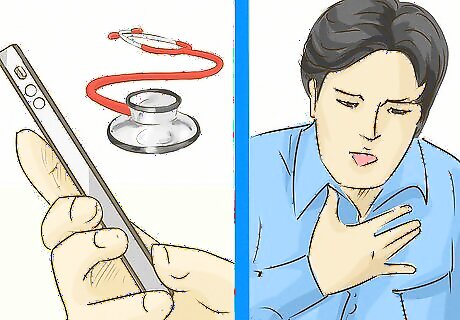
Contact your doctor in an emergency. Hyperventilation can indicate a serious issue and there are some cases in which you will want to contact your doctor or seek emergency services. If you notice any of the following aspects in regards to your hyperventilation seek immediate medical attention: If this is your first time experiencing rapid breathing. If you are in pain and hyperventilating. If you have an injury or fever and are hyperventilating. If your hyperventilating gets worse. If your hyperventilating is accompanied by other symptoms.
Helping Someone Who Is Hyperventilating

Notice the signs of hyperventilation. Before you can help someone during an episode of hyperventilation you will need to assess his condition. Generally, the signs will be apparent; however, you will need to be sure that he is in fact hyperventilating in order to help him properly. Hyperventilation will usually be characterized by very fast, shallow, chest level breathing. The person will generally appear to be in a state of panic. Speech will be difficult for the person. Muscle spasms in the person's hands may be visible.

Reassure the other person. If you think someone is hyperventilating you can help by offering your reassurance that she is going to be fine. Often times hyperventilating can cause even more panic during a panic attack, resulting in an increasing cycle and worsening symptoms. Calm reassurance can help lower the amount of panic the person is feeling and restore normal breathing rates. Remind her that she is having a panic attack and that she is not experiencing something life-threatening, such as a heart attack. Keep your tone calm, relaxed, and gentle. Let her know that you are there with her and are not going to leave her. EXPERT TIP Adam Dorsay, PsyD Adam Dorsay, PsyD Licensed Psychologist & TEDx Speaker Dr. Adam Dorsay is a licensed psychologist in private practice in San Jose, CA, and the co-creator of Project Reciprocity, an international program at Facebook's Headquarters, and a consultant with Digital Ocean’s Safety Team. He specializes in assisting high-achieving adults with relationship issues, stress reduction, anxiety, and attaining more happiness in their lives. In 2016 he gave a well-watched TEDx talk about men and emotions. Dr. Dorsay has a M.A. in Counseling from Santa Clara University and received his doctorate in Clinical Psychology in 2008. Adam Dorsay, PsyD Adam Dorsay, PsyD Licensed Psychologist & TEDx Speaker Remind the person that, even though they're scared, they're safe. For some people, just the word "safe" can really help them realize they're going to be okay.
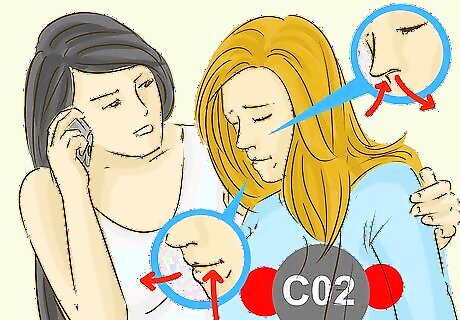
Help the person to increase his carbon-dioxide levels. During an episode of hyperventilation, carbon-dioxide levels fall in the body and can cause symptoms typically associated with hyperventilating. In order to retain carbon-dioxide in the body, have the person breathe using the following methods: Have him purse his lips, exhaling and inhaling through them. He may also try closing the mouth and one nostril. Have him breath in and out only through one open nostril. If the person appears in distress, turns blue, or complains of any pain, then emergency services should be contacted for evaluation in the ER.


















Comments
0 comment